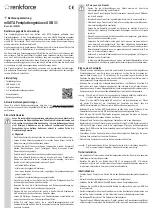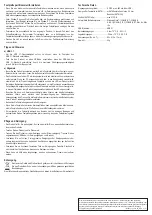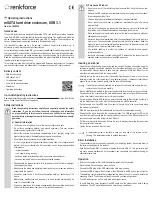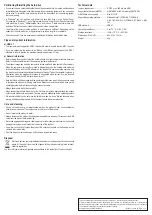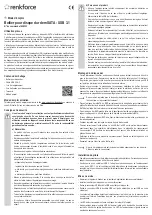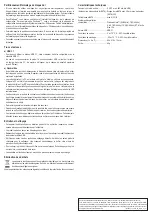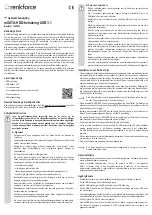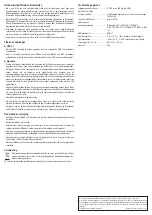
Partitioning/formatting the hard drive
• If you want to use a hard disk drive that has not been used before, it must be partitioned and
formatted before it appears in the file manager of your operating system and can be used as
a disk drive. To format the hard disk drive, refer to the instructions for the operating system
that you are using.
• In Windows
®
you can partition and format the hard disk drive via the Control Panel.
For example, in Windows
®
7, go to "System and Security" under Control Panel to format the
hard disk drive. Click on "Administrative Tools" and then on "Create and format hard disk
partitions". Select the correct hard disk drive and create a new partition.
•
Then format the newly created partition. A quick format is sufficient. Depending on the
capacity of the hard disk drive, a regular format may take a long time to complete.
• Consult an expert if you are unsure about partitioning/formatting the hard disk drive.
Tips and important information
a) USB 3.1
• Your computer must support the USB 3.1 standard in order to be able to use USB 3.1 speeds.
• If you are connecting the product to a USB hub, the USB hub must support the USB 3.1
standard in order to provide the maximum transfer speed (max. 5 Gb/s).
a) General information
• Before turning the product off, eject the hard disk drive from your computer to avoid data loss.
Refer to the documentation from the operating system manufacturer.
• The product recognises when the computer is turned on/off and turns itself on/off accordingly.
When the computer is turned off or placed in hibernation mode, the inserted hard disk drive
turns itself off along with the LED indicator on the product. On some operating systems, only
the monitor and connected peripheral devices are turned off when the computer is placed in
hibernation mode; the mainboard continues to be supplied with a current. If so, the inserted
hard disk drive and the LED indicator do not turn off.
•
Note that files may be damaged and the operating system may crash if the connection cable
is disconnected when data is being transferred. Always unmount the hard disk drive via the
operating system before disconnecting the connection cable.
• Always handle hard disk drives carefully.
•
When connecting the hard disk drive for the first time, it may take approximately one minute
until the hard disk drive is recognised. This time may vary depending on the operating system.
• We recommend that you do not move the hard drive when it is in use. Always take care when
moving and transporting the hard drive housing if a hard disk drive is inserted.
Care and cleaning
• You do not need to carry out maintenance work on the product. Under no circumstances
should you service any of the components in the interior of the product.
• Do not immerse the product in water.
• Always disconnect the product from the power supply before cleaning it. Disconnect the USB
cable from the product before cleaning.
• Never use aggressive detergents, rubbing alcohol or other chemical solutions, as these could
damage the casing or even impair the functioning of the product.
• Use a dry, lint-free cloth to clean the product. Do not press too hard on the housing, as this
can lead to scratch marks.
• Dust can be easily removed using a soft and clean long-haired brush.
Disposal
Electronic devices are recyclable waste and must not be disposed of in the household
waste. At the end of its service life, dispose of the product according to the relevant
statutory regulations.
You thus fulfil your statutory obligations and contribute to the protection of the environment.
This is a publication by Conrad Electronic SE, Klaus-Conrad-Str. 1, D-92240 Hirschau (www.conrad.com).
All rights including translation reserved. Reproduction by any method, e.g. photocopy, microfilming, or the capture in
electronic data processing systems require the prior written approval by the editor. Reprinting, also in part, is prohibited.
This publication represent the technical status at the time of printing.
Copyright 2016 by Conrad Electronic SE.
*1428323_v2_0616_02_DS_m_4L_(1)
Technical data
Input voltage/current .............................5 V/DC, max. 900 mA (via USB)
Supported hard drives (mSATA) ........... mSATA SSD with 3.5 mm height (SATA II/III)
mSATA hard drive capacity ...................Max. 512 GB
Supported operating systems ............... Windows Vista™ (32/64-bit), 7 (32/64-bit),
8 & 8.1 (32/64-bit), 10.0 (32/64-bit), RT, Mac 9.x, Mac
10.x
USB standard .......................................USB 3.1
Operating conditions .............................0 to +70 °C, 5 – 80 % RH
Storage conditions ................................-20 to +70 °C, 5 – 80 % RH
Dimensions (W x H x D) .......................85 x 41.2 x 12 mm
Weight ..................................................40 g

